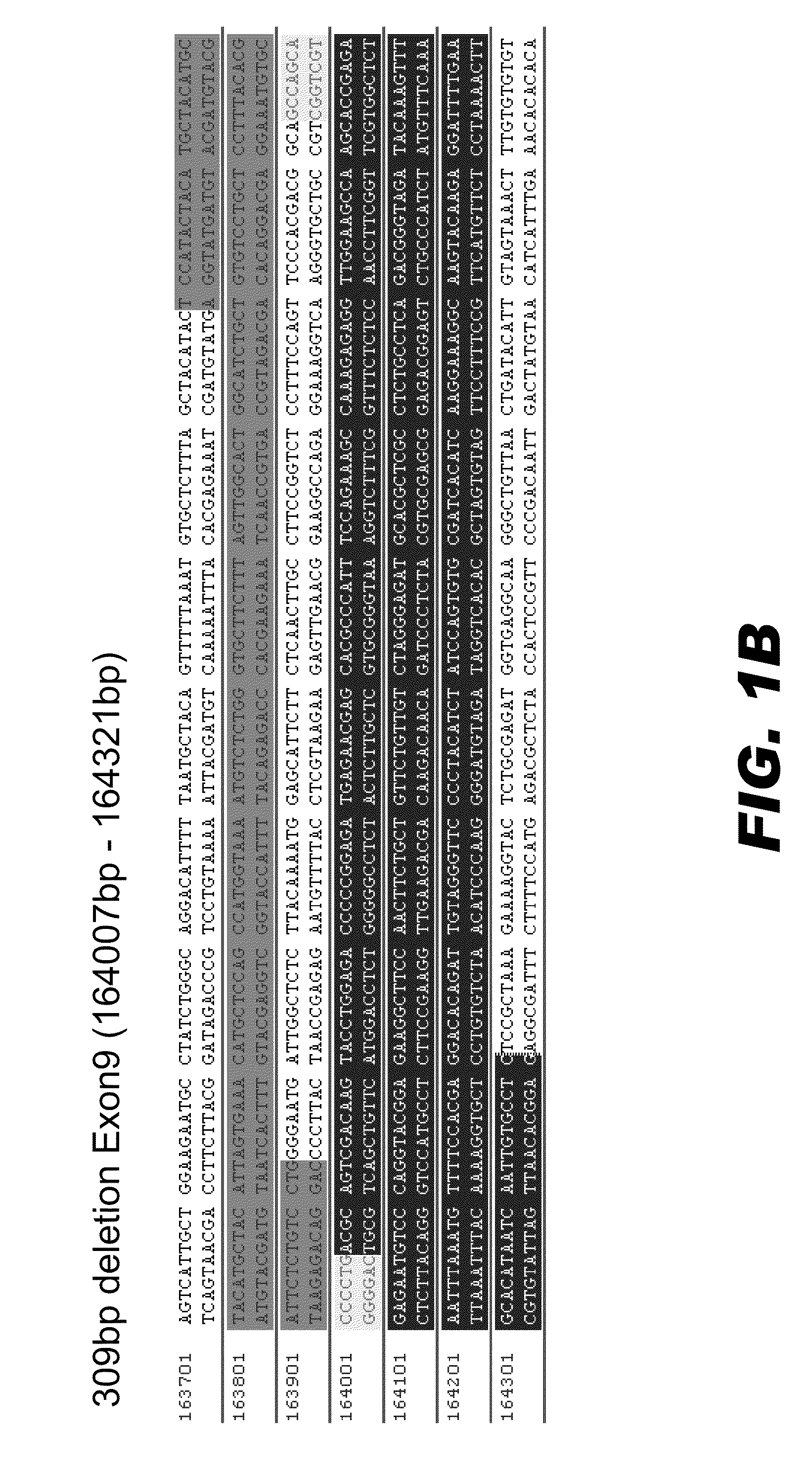Genome editing of cognition related genes in animals
a technology gene editing, applied in the field of gene editing of cognition related genes in animals, can solve the problems of affecting the progress of ongoing research into the causes and treatments of these cognitive disorders, affecting the ability of mice to study complex disorders of cognition and behavior, and requiring months or years for gene knockout technology to construct and validate proper knockout models
- Summary
- Abstract
- Description
- Claims
- Application Information
AI Technical Summary
Benefits of technology
Problems solved by technology
Method used
Image
Examples
example 1
Genome Editing of the APP locus
[0111]Zinc finger nucleases (ZFNs) that target and cleave the APP locus of rats were designed, assembled, and validated using strategies and procedures previously described (see Geurts et al. Science (2009) 325:433). ZFN design made use of an archive of pre-validated 1-finger and 2-finger modules. The rat APP gene region was scanned for putative zinc finger binding sites to which existing modules could be fused to generate a pair of 4-, 5-, or 6-finger proteins that would bind a 12-18 by sequence on one strand and a 12-18 by sequence on the other strand, with about 5-6 by between the two binding sites.
[0112]Capped, polyadenylated mRNA encoding pairs of ZFNs was produced using known molecular biology techniques. The mRNA was transfected into rat cells. Control cells were injected with mRNA encoding GFP. Active ZFN pairs were identified by detecting ZFN-induced double strand chromosomal breaks using the Cel-1 nuclease assay. This assay detects alleles of...
example 2
Genome Editing of Cognition-Related Genes in Model Organism Cells
[0114]ZFN-mediated genome editing may be tested in the cells of a model organism such as a rat using a ZFN that binds to the chromosomal sequence of a cognition-related gene such as ANK3 (Ankryn 3), APP (Amyloid precursor protein), B2M (Beta-2 microglobulin), BRD1 (Bromodomain containing 1), FMR1 (Fragile X mental retardation 1), MECP2 (Methyl CpG binding protein 2), NGFR (Nerve growth factor receptor), NLGN3 (Neuroligin 3), or NRXN1 (Neurexin 1). ZFNs may be designed and tested essentially as described in Example 1. ZFNs targeted to a specific cognition-related gene may be used to introduce a deletion or insertion such that the coding region of the gene of interest is inactivated.
example 3
Genome Editing of Cognition-Related Genes in Model Organisms
[0115]The embryos of a model organism such as a rat may be harvested using standard procedures and injected with capped, polyadenylated mRNA encoding ZFNs that target cognition-related genes, as detailed above in Example 1. Donor or exchange polynucleotides comprising sequences for integration or exchange may be co-injected with the ZFNs. The edited chromosomal regions in the resultant animals may be analyzed as described above. The modified animals may be phenotypically analyzed for changes in behavior, learning, etc. Moreover, the genetically modified animal may be used to assess the efficacy of potential therapeutic agents for the treatment of cognition-related disorders.
PUM
| Property | Measurement | Unit |
|---|---|---|
| physical size | aaaaa | aaaaa |
| color | aaaaa | aaaaa |
| color figure | aaaaa | aaaaa |
Abstract
Description
Claims
Application Information
 Login to View More
Login to View More - R&D
- Intellectual Property
- Life Sciences
- Materials
- Tech Scout
- Unparalleled Data Quality
- Higher Quality Content
- 60% Fewer Hallucinations
Browse by: Latest US Patents, China's latest patents, Technical Efficacy Thesaurus, Application Domain, Technology Topic, Popular Technical Reports.
© 2025 PatSnap. All rights reserved.Legal|Privacy policy|Modern Slavery Act Transparency Statement|Sitemap|About US| Contact US: help@patsnap.com


